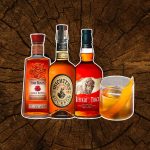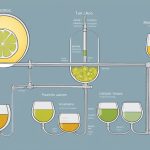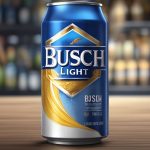When it comes to beer, one of the most common terms you’ll hear is “hoppy.” But what exactly does it mean? And how does it differ from “bitter”? As a beer enthusiast, I’ve spent countless hours researching and tasting different brews to understand the nuances between these two flavors. Join me on this journey as we dive deep into the world of hoppiness and bitterness.
The Basics: What is Hoppy?
In the beer world, “hoppy” refers to the flavor and aroma of hops. Hops are the flowers of the hop plant and are responsible for balancing the sweetness of malt with bitterness in beer. They also add a variety of flavors such as citrus, pine, floral, and even tropical fruit notes.
When I first started exploring hoppy beers, I was blown away by the range of flavors and aromas that hops can impart. From the crisp and citrusy notes of American hops to the earthy and floral characteristics of European varieties, each hop variety brings its own unique profile to the beer.
Understanding Bitterness
While hoppy beers are often associated with bitterness, it’s important to note that bitterness is just one aspect of hoppy flavors. Bitterness in beer comes from the alpha acids found in hops. These acids are released during the brewing process and contribute to the overall bitterness of the beer.
But bitterness doesn’t necessarily mean the beer will taste bad. In fact, a well-balanced beer should have a harmonious blend of malt sweetness and hop bitterness. The bitterness acts as a counterpoint to the sweetness, creating a complex and enjoyable drinking experience.
The Difference: Hoppy vs Bitter
Now that we have a basic understanding of hoppy and bitter flavors, let’s explore the difference between the two. While both terms are often used interchangeably, they represent distinct aspects of the beer’s taste profile.
When we say a beer is “hoppy,” we are referring to the hop-derived flavors and aromas. It can range from subtle notes to intense bursts of hop character, depending on the beer style and hop variety used. Hoppy beers can be fruity, floral, resinous, or even dank, providing a wide array of flavors to explore.
On the other hand, bitterness is the perceived taste on the palate that comes from the alpha acids in hops. It is measured in International Bitterness Units (IBUs), with higher numbers indicating more bitterness. Bitterness can range from a gentle background note to a prominent and lingering sensation, depending on the beer’s recipe and brewing techniques.
Personal Reflections
Throughout my beer journey, I’ve come to appreciate both hoppy and bitter beers for their unique qualities. Hoppy beers often excite my taste buds with their vibrant and complex flavors, while bitter beers provide a refreshing and palate-cleansing experience.
When it comes to hoppy vs bitter, it’s all about personal preference. Some beer lovers crave the intense hop flavors of an IPA, while others prefer the smooth bitterness of a well-balanced pale ale. What matters most is finding the styles and flavors that resonate with your taste buds.
Conclusion
So, the next time you hear someone describing a beer as “hoppy” or “bitter,” remember that they are referring to different aspects of the beer’s taste profile. Hoppy flavors come from the hops themselves, adding a range of flavors and aromas to the beer. Bitterness, on the other hand, is the perceived taste on the palate that comes from the alpha acids in hops.
Whether you’re a hophead chasing the latest IPA or a fan of well-balanced brews, understanding the difference between hoppy and bitter can enhance your appreciation of beer. So grab a pint, savor the flavors, and cheers to the wonderful world of hops and bitterness!







